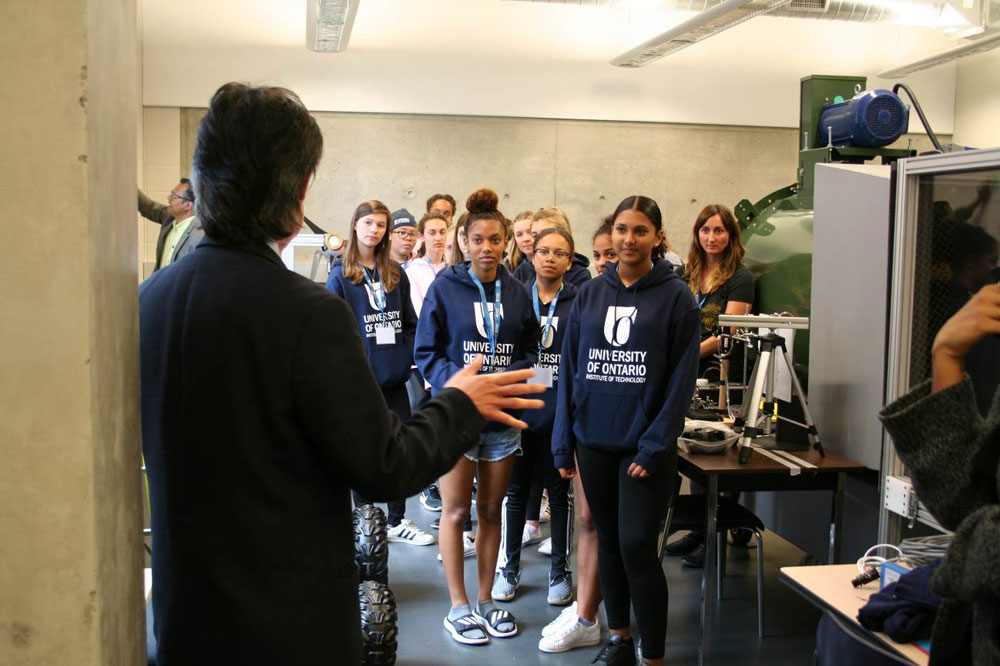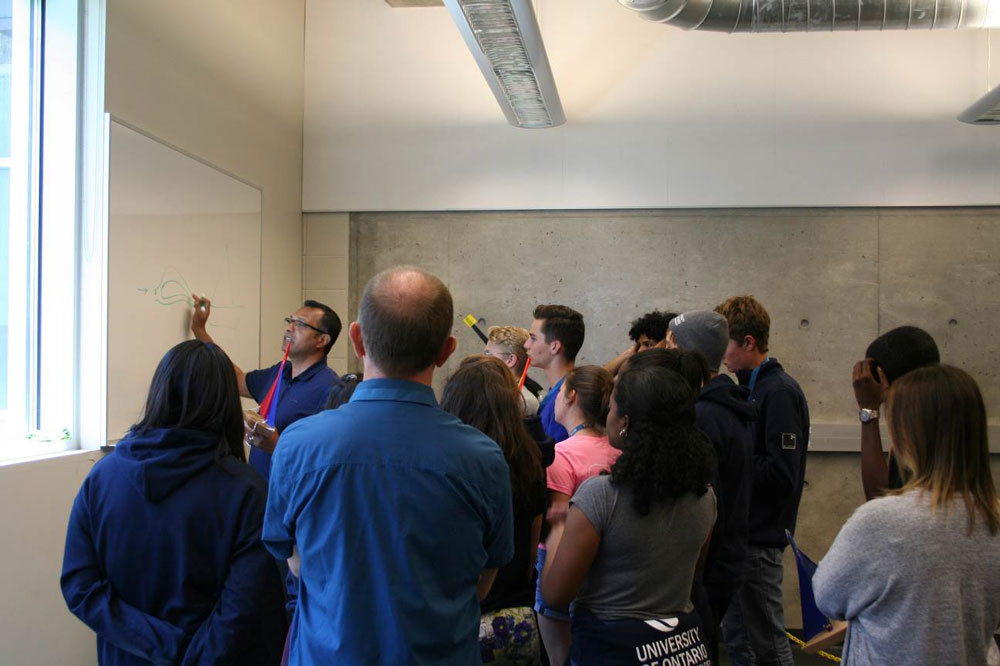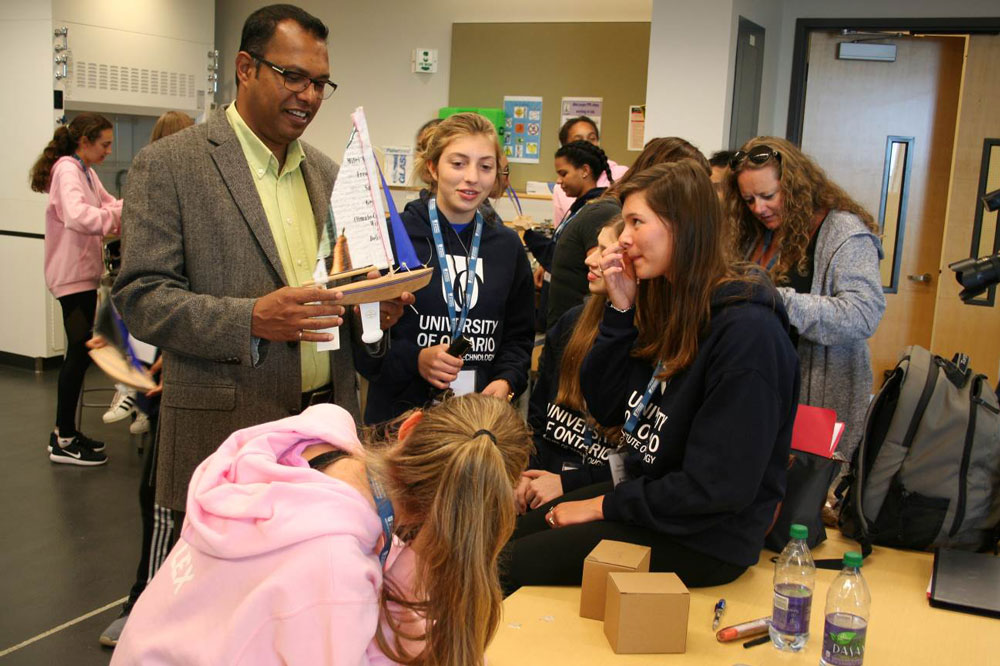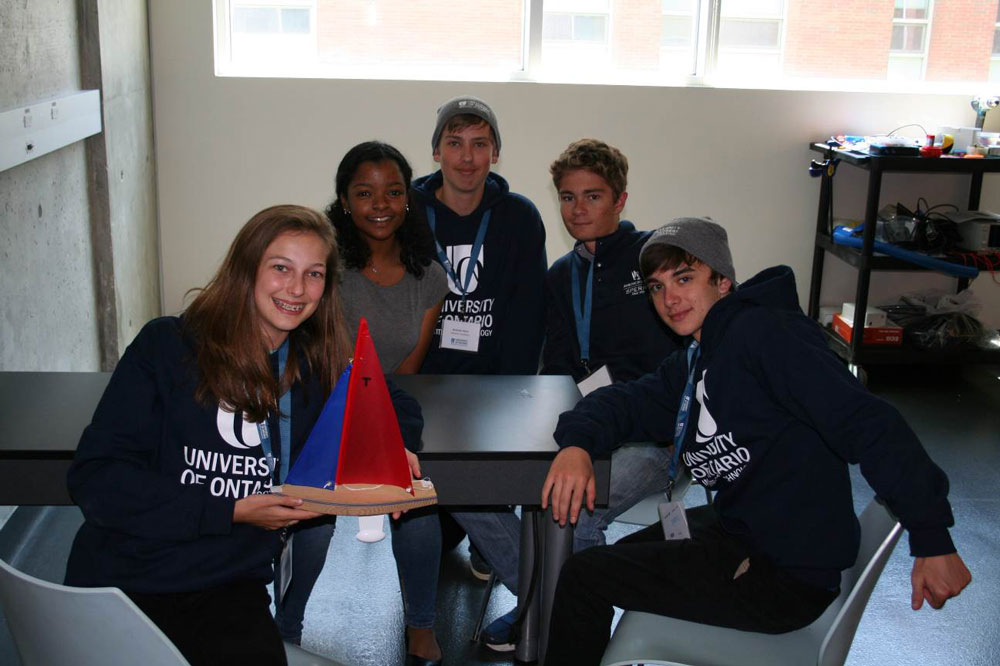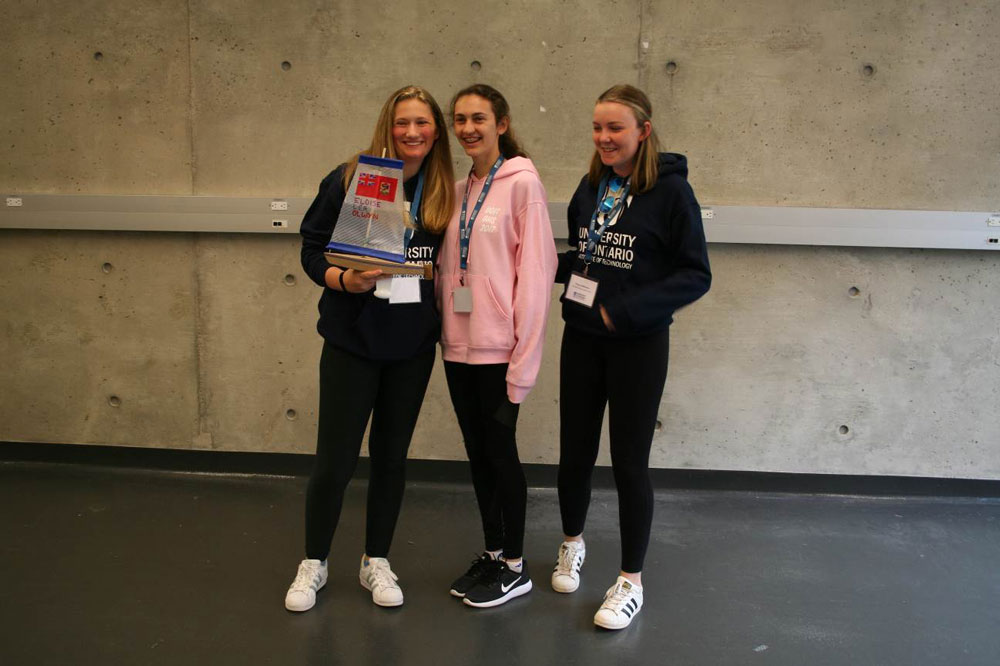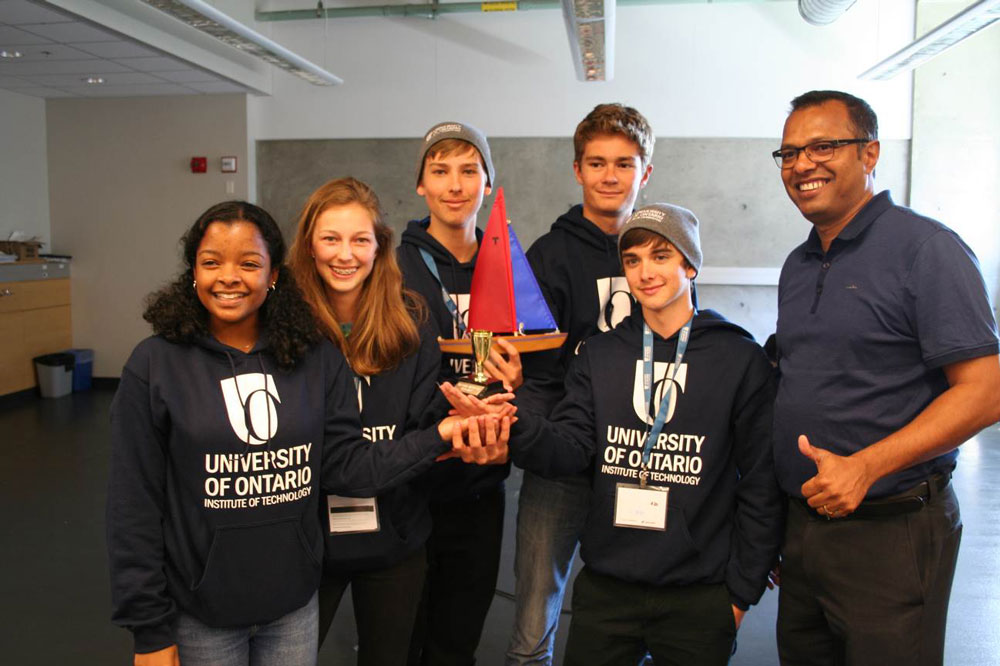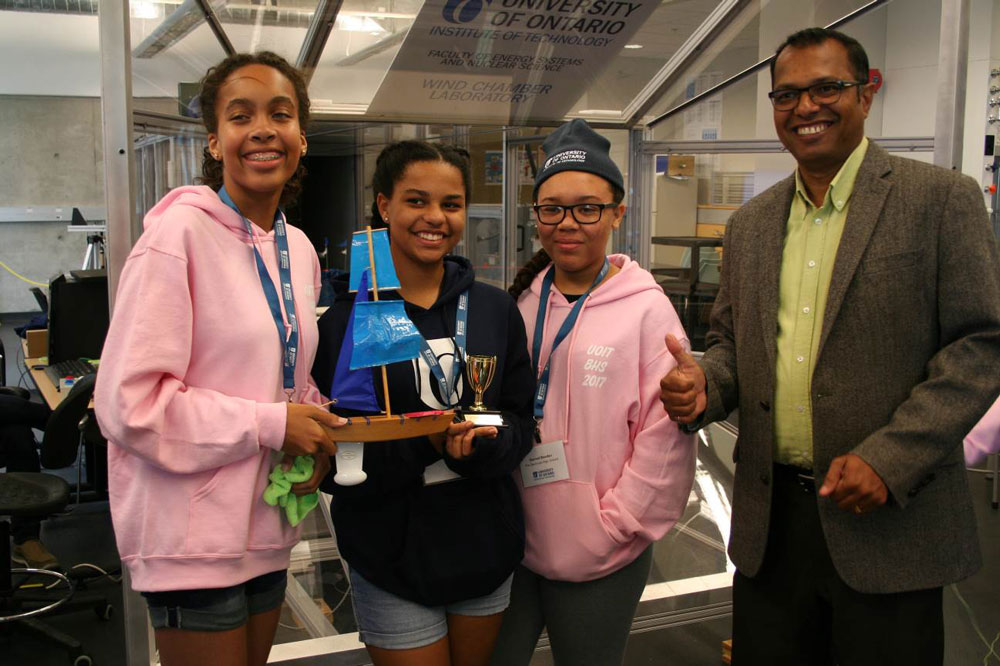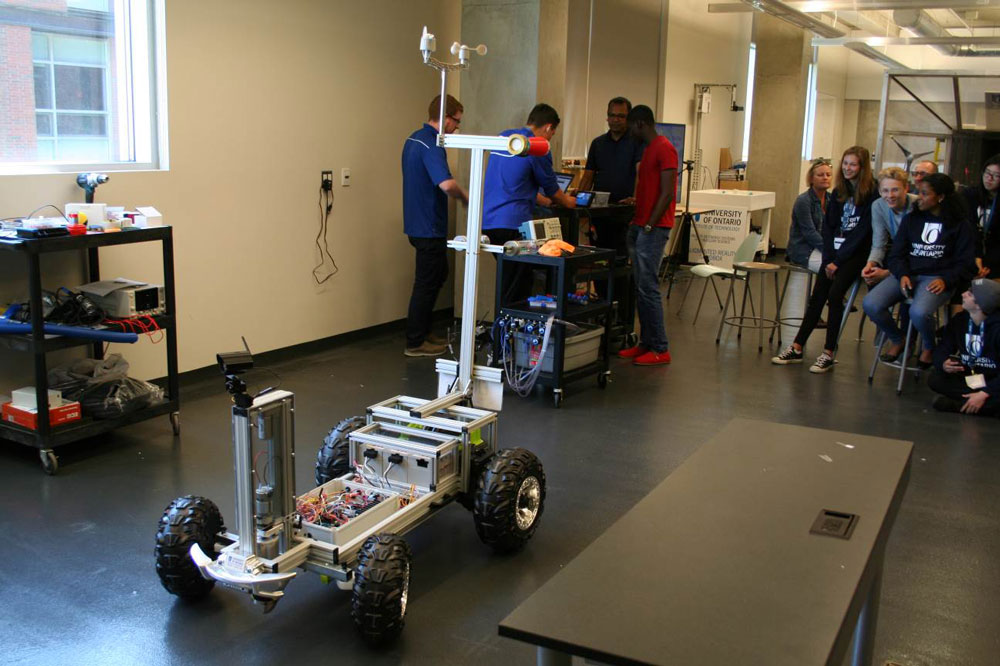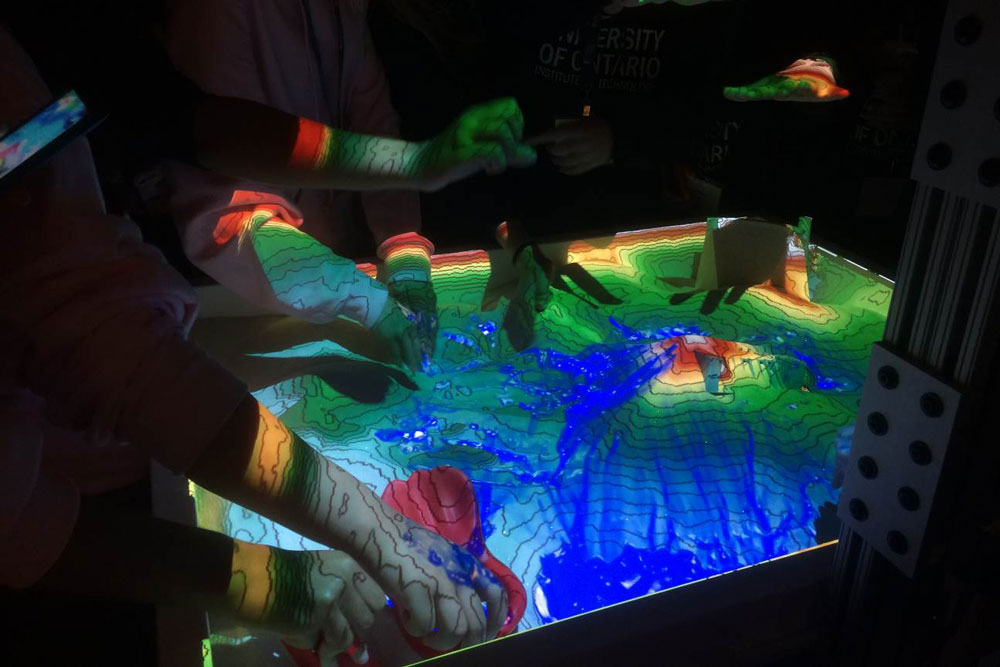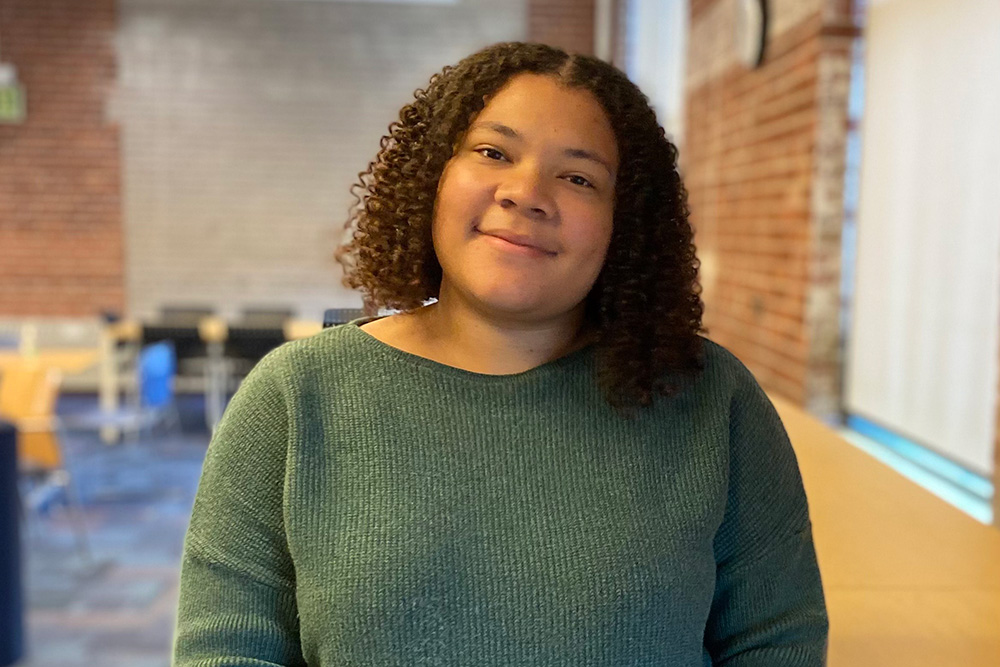Against the wind: Bermudian students visit campus, learn about sailing physics
July 14, 2017

Sailing with the wind is easy—as long as your sails are at a right angle to the wind, the wind pushes on them and you just coast along. But how do you make your boat move forward against the wind? Students from two secondary schools in Bermuda recently enjoyed a fun afternoon at the University of Ontario Institute of Technology learning about this as they explored sailing physics and engineering.
As part of the university’s international outreach, the Faculty of Energy Systems and Nuclear Science (FESNS) invited students from Warwick Academy (June 14) and Bermuda High School (June 21) to a hands-on session where they investigated how moving air interacts with sails in various positions to propel a boat forward. Under the supervision of Sharman Perera, Senior Lecturer and Lab Manager, Callan Brown, Lab Specialist, and Robert Ulrich, Lab Technician, students learned how to adjust their sails to optimize the two wind forces acting on the sails:
- Lift force: created by the wind moving around the sails. The direction of the lift force is perpendicular to the incident wind.
- Drag force: also created by the wind moving around the sails, but acting in the same direction as the incident wind.
The prospective students put their newly acquired knowledge to the test by designing their own mini-sailboats and racing them inside the university’s Environmental Wind Chamber Laboratory.
“Every sailboat performed swimmingly!” said Perera. “The competition taught students the value of teamwork, which is important in any engineering field.”
The students also checked out undergraduate thesis projects developed by previous students (most supervised by Perera). Some test-drove the faculty’s remotely controlled environmental radiation detector robot (ENRAD) while others played in the Augmented Reality Sandbox.
“The creativity and diversity of these projects showed the students the value of the education they would receive at the University of Ontario Institute of Technology,” said Perera. “It also opened their eyes to the various opportunities awaiting them should they pursue an education in the only Nuclear Engineering bachelor’s degree program in Canada. FESNS would like to thank Warwick Academy and Bermuda High School for partaking in our competition. We hope these activities piqued the students’ interest in pursuing a post-secondary education within the science, technology, engineering or mathematics (STEM) disciplines.”
9 > 1